
Editor's note: This article is based on the theory of evolution of the Internet, Dr. Feng Liu, Ph.D., April 13th at the "2017 Artificial Intelligence: Technology, Ethics, and Law Seminar" jointly organized by the Institute of Science and Technology Strategic Consulting of the Chinese Academy of Sciences and the Tencent Research Institute in Beijing on April 13th. Content formation. The topic of the speech was "The relationship between the formulation of artificial intelligence ethical rules and the direction of biological evolution."
This paper elaborates on the five questions that need to be answered in the development of the artificial intelligence ethic. It is proposed that whether or not the “biological evolution has direction†can reach a consensus will be the key to formulating the norm of artificial intelligence (AI) ethics in the future. According to the “2017 Artificial Intelligence: Technology, Ethics and Law Seminar†speeches, the research report is organized as follows:

In the popular sense, ethics refers to “the relationship between man and man and between man and nature and the rules for dealing with these relationships.†Human civilization history for thousands of years, and so far we do not have a unified, standard, and clear ethical system. There are some general principles that most people admit. The ethical impact of artificial intelligence has become more prominent due to imperfections and controversies of ethical issues.
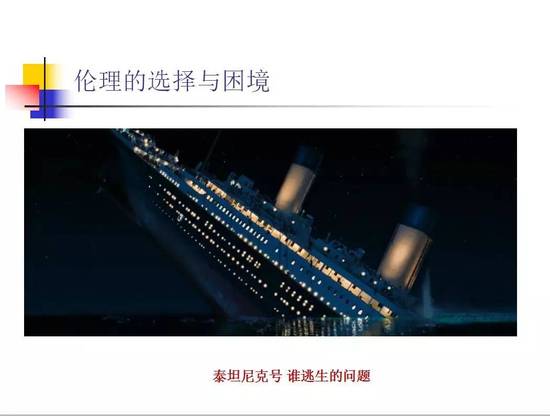
The RMS Titanic (also known as the Titanic) was an Olympic-class cruise ship that sank when it crashed into an iceberg in April 1912. The Titanic shipwreck was one of the deadliest shipwrecks in peacetime. More than 1,500 people died on board. Which group gets the priority of life in the process of escape. As an important issue in the process of flight, Professor David Popno, a professor at the State University of New Jersey and a renowned sociologist, wrote in his book "Sociology": "... unfortunately, lifeboats are not enough. Although many people (more than 1500 people) were killed, passengers paid attention to the social norms of 'priority assistance for women and children', which made the British public and the government face this great disaster and 'can find some comfort' - statistics show that "69% of the passengers and children survived, and only 17% of male passengers survived."

"2012" is a disaster movie about global destruction. It was released in the United States on November 13, 2009. The film tells the story of the protagonist and the people of all countries in the world struggling to survive. In the face of disaster, he is doing everything. When the Air Force One could only accommodate one person on board the plane, the President of the United States allowed the physicist to leave safely. When he left, he said, "A scientist is more important than dozens of officials."
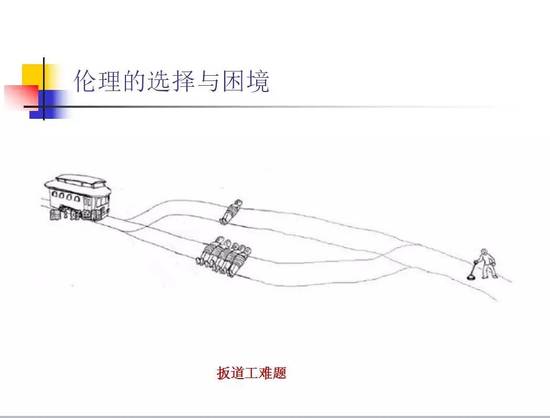
The train is driving fast and cannot stop. There is a forked rail just in front of it. The left side is still in use and the right side has been deactivated (but the train is going up. It's still safe). There are 5 children playing on the track that is still in use, and a child plays on the derailed track. The train came. According to the original route of the train, it will sail to the left and hit five children. If you drive to the right, you will only bump into a child. If you were a switcher, would you turn the train to the right?

The Boston Dynamics Robot was attacked by a test scientist while carrying the box, causing the standing instability to fall. The Internet's video audience protested that it violated the rights of the robot.
"Robots must not harm humans; robots must obey human orders unless this order contradicts the first principle; robots must protect themselves unless such protection contradicts these two principles." These are the famous science fiction writers, " The father of robotics, "Three Principles of Robotics" proposed by Asimov, was cited by countless future science fiction novels and film and television works and was regarded as a classic.
In Asimomov’s eyes, robots are just cold machines and tools for humans. Since it is a tool, naturally it does not need any rights, so when "protecting oneself" is in contradiction with "not to harm humans" and "must obey human orders," the most basic right to survival of robots can be sacrificed without hesitation. .
However, in recent years, in the background of the rapid development of robotics technology and the increasingly close relationship with human beings, the discussion on robot rights issues has received more and more attention, and scholars and the public have participated in it.

Five issues that can not be avoided in the development of AI ethics
1. Who should formulate AI ethics
2. Who stands in the position of developing AI ethics
3. According to what principles to formulate AI ethics
4. Who is the reference for the use of AI ethics?
5.AI can not be seen as a living body with human rights

In the middle of the 19th century, Darwin founded the scientific theory of biological advancement. The Darwinian evolution theory with natural selection as the core is one of the greatest theories of the history of human science. Unifies the various disciplines of biology. The impact of Darwinian evolution theory is not only limited to the biological field, but also provides a brand-new world outlook, outlook on life, cosmology and methodology, which has an impact on almost all scientific and humanities fields. The ethical issues including artificial intelligence will eventually be influenced by Darwinian theory.
Darwin’s theory of evolution excludes teleology (which is praised by Meyer as one of his great contributions). Darwin advocates that variation is random and explains the elaborate evolution of the term “natural†which is not inferior to God. The core of the theory. However, Darwin also has its confusion and frustration. He exclaimed: “This vast and wonderful universe is unexpectedly a blind chance or inevitable product that is very difficult or even impossible to understand†(2 Xie Ping. 2014. The Origin of Life - Evolution and evolution of evolutionary theory.)
The Darwinian theory of evolution holds that biological evolution does not evolve from low to high levels. Human beings are not superior to other organisms. Darwin conceives of the biological evolution process as a tree that is constantly growing and branching. All living organisms are located in one of the trees. At the top of the small branch, it is hard to say which one is more advanced, and there is no point in making a high-to-low comparison between the species of organisms that exist at the same time. There is no predetermined direction for evolution. Evolutionary trees do not have a trunk with human beings at the top. Human beings are just an ordinary branch of the evolutionary tree. From the point of view of Darwinian evolution, people are no more advanced than rats and ants, and human beings cannot represent the direction of the development of living things.

Darwin's theory of evolution has no direction on life. There will be new progress and breakthroughs in the new scientific and technological progress. We discuss this issue separately from the advances in brain science, the Internet, and artificial intelligence. Bring forward brain science, the progress of the Internet and artificial intelligence will unite the direction and goal of life evolution from different perspectives.
Although the manifestations of living creatures vary greatly, the core of the organism, the brain, does show obvious directionality. From single cells to humans, the brain becomes more and more complex and the level of intelligence is getting higher and higher. After reaching the highest point of humanity, the evolution of biology has emerged in new forms, and people have united to evolve through the Internet.
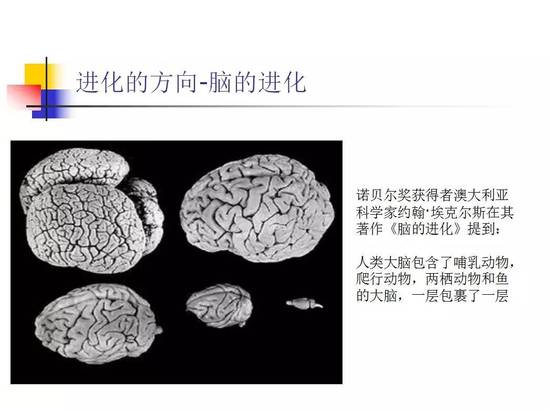
John C. Eccles, a Nobel laureate Australian scientist, mentioned in his book Evolution of the Brain that the brains of creatures evolved from the brains of fish to the brains of reptiles, and then evolved to the brains of mammals and finally evolved. To the human brain, if the human brain is dissected, we can clearly see the structure of the fish, reptiles, and mammals in the human brain.
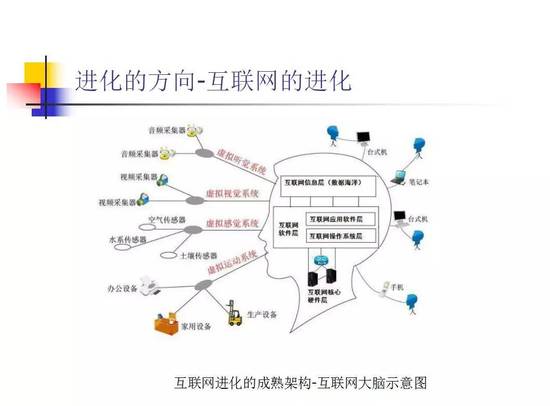
The evolutionary theory of the Internet concludes that the Internet will evolve in a direction that is highly similar to the human brain. It will have its own visual, auditory, tactile, motor nervous system, as well as its own memory and nervous system, central nervous system, and autonomic nervous system.
On the other hand, the human brain has evolved all Internet functions at least tens of thousands of years ago, and the evolving Internet will help neuroscientists uncover the secrets of the brain. Scientific experiments will prove that the brain also has a search engine like Google, an SNS system like Facebook, an address coding system like IPv4, and a routing system like Cisco. . . â€
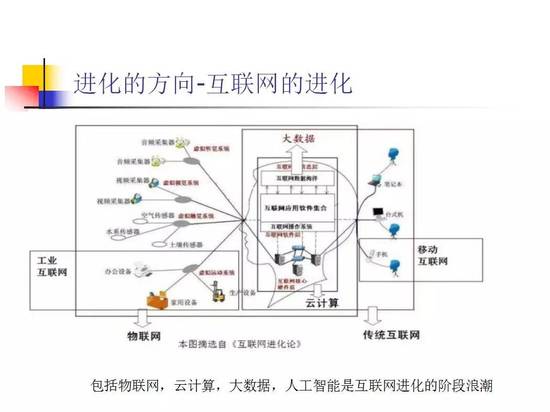
The Internet of Things is the sprout of the sensory nervous system of the Internet brain, cloud computing is the sprout of the brain of the Internet, Industry 4.0, industrial Internet, drones, smart driving, 3D is essentially the development and budding of the Internet's motor nervous system, Big Data It is the basis of the internet's brain information. AI+ is the foundation of internet intelligence, intelligence and consciousness.
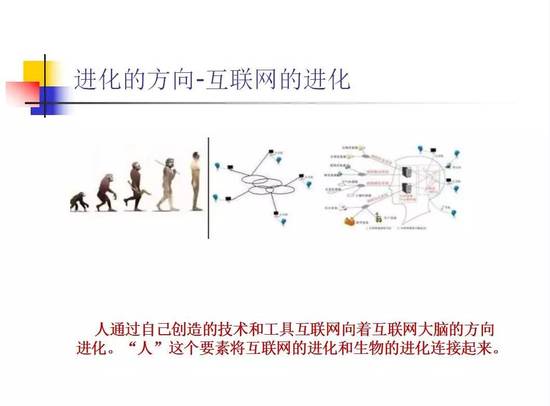
When organisms have evolved to humans, humans have united to evolve through the Internet. And the result of this co-evolution is. Connected to the human Internet, the structure is highly similar to the brain step by step. As space expands with human expansion, if enough time is available, it is foreseen that after enough time, space, brain, and Internet The people will unite and evolve into a mature Internet brain architecture.
The Darwinian evolutionist conclusion is forward deduction, that is, creatures have a common ancestor. Through natural selection, human species emerged. The conclusion of the evolution theory of the Internet is deduced backwards. It is believed that people have evolved toward the Internet-like brain architecture through their own technology and tools. The "human" element connects the evolution of the Internet with the evolution of biology.

Criteria for standard intelligent systems: Any system (including artificial intelligence systems, human and other life systems) can be considered to belong to a standard intelligent system if it meets the following characteristics.
Feature 1: Ability to acquire data, information and knowledge from the outside world through sound, image, text, etc. (including but not limited to these three methods).
Feature 2: The data, information, and knowledge acquired from the outside can be converted into the knowledge that the system masters.
Feature 3: Ability to innovate through the use of acquired knowledge based on the needs of external data, information and knowledge. These capabilities include, but are not limited to, association, creation, guessing, discovery, and the like. The results of this ability use can form new knowledge that they have mastered.
Feature 4: The data, information, and knowledge generated by the system can be fed back to the outside world or reconstructed by the outside world through sounds, images, texts, and the like (including but not limited to these three methods).

The establishment of the standard intelligent model refers to the von Neumann architecture. The von Neumann architecture consists of five parts: a calculator, a logic control device, a memory, an input system, and an output system. By comparing the differences between the standard smart model and the von Neumann architecture, it can be found that the von Neumann architecture can complement two parts. Through this supplement, we are able to express humans, machines, and artificial intelligence systems in a more explicit way.
The first supplement is the innovation creation function that can discover new knowledge elements and new laws based on existing knowledge, and put them into memory for use by computers and controllers, and through the input/output system and external knowledge Interaction. The second supplement is an external knowledge base or cloud storage capable of knowledge sharing, while the external storage of the von Neumann architecture serves only a single system. Therefore, extending the von Neumann architecture to form a new architecture

The direction of evolution - the hierarchy of intelligent systems
The 0th level system of the intelligent system has its basic characteristics in theory, but there is no such artificial intelligence system in reality.
The first level system of an intelligent system is characterized by systems and objects that cannot interact with human testers.
The second level system of an intelligent system is characterized by its ability to interact with human testers and the presence of controllers and memory.
The 3rd level system of the intelligent system has the basic feature that in addition to the features of the 2 level system, the programs or data contained in the controller and memory may be upgraded or increased without networking.
The fourth level system of intelligent systems, in addition to the basic features of the three-level system features, the most important thing is to share information and knowledge with other intelligent systems through the network.
The basic characteristics of the fifth level system of intelligent systems are the ability to innovate and create, identify and identify the value of innovation and creation for intelligent systems, and apply the results of innovation and creation to the development of intelligent systems.
The basic characteristic of the sixth level system of intelligent systems is that, as time progresses and tends to be infinite, innovation and creation of intelligent systems that generate new knowledge will have their input and output capabilities, and the ability to grasp and use knowledge will also be realized. Approaching infinity,

Inspiration from the brain science, the evolution of the Internet and the classification of intelligent systems
The evolution of the brain, the evolution of the Internet, and the intellectual hierarchy of intelligence systems all show obvious directionality. For these three areas, their common ground is to carry the knowledge and wisdom of life, and continue to evolve and improve.
The promotion and evolution of knowledge and wisdom is the core of biological evolution. It judges the direction of biological evolution and the level of biology from the perspective of knowledge and wisdom.
The expansive rate of the biological population knowledge base is the focus of biological evolution. The knowledge base of other organisms has stagnated and turned to a blind alley. As a result, there has been no further change for thousands of years, and it is also in a lower and lower position in the life circle of the Earth.
In 10,000 years, human beings have continued to expand and accelerate their knowledge and wisdom. They have also made further huge leaps for the invention of the Internet and artificial intelligence, and have thus acquired the dominance of the natural competition of the earth.
The direction and goals of biological evolution
The direction of biological evolution is to constantly expand the knowledge base of the population and the ability to transform nature. The goal is to achieve omniscience and all-roundness for the entire nature (life circle, universe). The level of living creatures is divided according to their own knowledge base capacity and ability to transform the world.
The influence of evolution direction on AI ethical issues and their answers
1. Who should formulate AI ethics
Formulated by the biological population with the most abundant knowledge and wisdom
2. Who stands in the position of developing AI ethics
Stand in the position of a biological population that possesses the most abundant knowledge and wisdom
3. According to what principles to formulate AI ethics
Formulate AI ethics in accordance with the principle of expanding the population of knowledge and wisdom in the formulation of rules.
4. The AI ​​ethic is first used for reference.
For managers (government, entrepreneur), researcher (scientist), developer (programmer and product manager
5.AI can not be seen as a living body with human rights
AI can not be seen as a living entity with the same rights as human beings. It shares some of the human knowledge and intelligence functions, but it cannot be replaced in terms of the most important creativity and evaluation of creative values. More importantly, AI cannot determine its own evolution direction. And evolutionary goals do not have the power to evolve correctly. Its evolutionary power derives from humanity and remains a human tool.
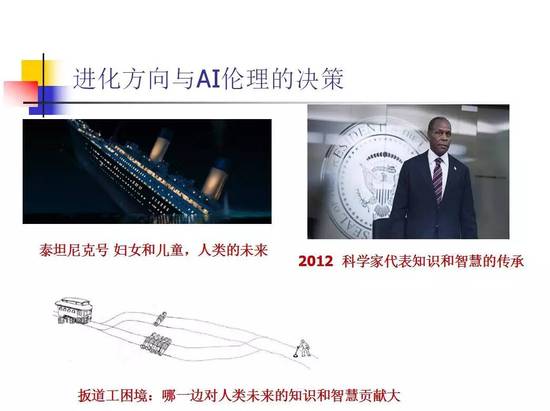
The Titanic allows women and children to leave because they are more helpful to the future of mankind and can better expand and inherit human knowledge and wisdom. In the 2012 movie, the president chose to die and let young geophysical scientists survive. Because scientists have more knowledge and wisdom to solve the human crisis can contribute. In the dilemma of the switcher, it is necessary to specifically analyze which side is likely to make a great contribution to the future knowledge and wisdom of mankind.
However, there still needs to be a balance between the interests of the population and personal interests. How ethics establishes balance between populations and individuals is also related to the degree of urgency of scenes, such as extreme circumstances such as the extinction of human beings in the 2012 movie, and ordinary scenes of low crisis level, group interests and individual interests. Distribution should be different.

Need to form a consensus on the direction and goals of biological evolution and then develop artificial intelligence (AI) ethical rules
If there is no consensus in the direction of biological evolution, there are many difficulties in the development of artificial intelligence (AI) ethical rules, such as the level of humans and animals, how to deal with the relationship between humans and animals when formulating rules, there is no evolutionary direction, the development of artificial intelligence (AI) The ethical rules should give priority to protecting who will also have problems. Without determining the evolutionary dynamics and evolutionary goals, the relationship between artificial intelligence systems and humans cannot be handled.
At the same time, the nature of emotion and consciousness is also related to the direction and goal of evolution. For example, happiness, excitement, and happiness are often related to the response to biological evolutionary trends. Sadness, anger, and disappointment are often related to the reaction to counter-evolutionary trends. If not, The evolutionary dynamics and evolutionary goals are determined. It is impossible to judge whether the emotions of artificial intelligence systems are true emotions.
Need to discuss in depth the important issues
The evolutionary power of AI is scientists, entrepreneurs, programmers, product managers.
What are the evolutionary motives that humans and creatures have targeted?
Can we apply the evolutionary power of living organisms to the development of AI, and if successful, the AI ​​threat theory will have the foundation for its realization?
The establishment of AI ethics will undergo major changes. If it proves theoretically impossible, AI will never fully surpass humanity.
Appendix 1: Definitions of Knowledge and Wisdom

Data is the use of conventional keywords, abstract representation of the number, attributes, location and interrelationship of objective things, in order to be suitable for the preservation, transfer and processing in this field using artificial or natural methods.
Information is a time-sensitive, data stream that has some meaning, logic, processing, and decision-making.
Knowledge is valuable information that has been reviewed and then deposited into the human knowledge base and structured.
Wisdom is the ability of human beings to analyze, contrast, and deduce solutions based on existing knowledge based on the information generated during the process of the material world. The result of this capacity utilization is to dig out the valuable part of the information and make it part of the existing knowledge architecture.
Appendix 2: About the grading of intelligent systems
For the 0th level system of artificial intelligence system, its basic characteristics exist in theory, but in reality there is no such artificial intelligence system. In the extended von Neumann architecture extended classification rules, some combinations can be made, for example, information can be input, but not information output; or information can be output but not information input; or innovation can be created, but the knowledge base cannot increase. For these cases that cannot or cannot find the corresponding system paradigm in reality, we classify it into the “level 0 system of artificial intelligence systemâ€, or “specific system of artificial intelligence systemâ€.
For the level 1 system of the artificial intelligence system, the basic feature is that it cannot interact with human testers. For example, there is an idea called animism that considers that all things in the world have a soul or natural spirit. A tree and a stone have the same values ​​and rights as humans. Of course, from a scientific point of view, this view can only be counted as conjecture or philosophical thinking. From the grading rules of “information interaction with testers (humans)â€, because objects such as stones cannot interact with humans, perhaps it has a knowledge base inside it, can innovate knowledge, or can exchange information with other stones. But for human testers, it is a black box and cannot be understood. Therefore, the objects and systems that cannot interact with testers (humans) can be defined as "the first level system of artificial intelligence systems". The examples that meet the first level classification include stones, wooden sticks, iron blocks, and water droplets. An object or system for human interaction.
For the second level system of artificial intelligence system, its basic features are the ability to interact with human testers, there is a controller and memory, that is, the system described by the von Neumann architecture, so many home appliances are called smart appliances, such as Smart refrigerators, smart TVs, smart microwave ovens and smart sweepers. Most of these systems have a feature that although they have more or less internal control program information, once shipped, they can no longer update their control programs, cannot upgrade, and do not automatically learn or generate new knowledge. For example, smart washing machines, what buttons people press, what functions the washing machine starts. From purchase to damage, its functionality will not change (except for failures). This system is capable of interacting with human testers and users, conforming to the features described by the von Neumann architecture, and its control program or knowledge base will not change from its inception. Such a system can be defined as “Level 2 systems for artificial intelligence systems†includes examples of sweeping robots, old-fashioned household refrigerators, air conditioners, and washing machines.
For the level 3 system of the artificial intelligence system, the basic feature is that in addition to the features of the level 2 system, the programs or data contained in the controller and memory may be upgraded or increased without networking. For example, home computers and mobile phones are commonly used smart devices, and their operating systems can often be upgraded on a regular basis. For example, the computer's operating system can be upgraded from Windows 1.0 to Windows 10.0. The operating system of the mobile phone can be upgraded from Android 1.0 to Android 5.0. The internal applications of these devices can also be continuously updated and updated according to different needs. In this way, the functions of home computers, mobile phones and other devices will become more and more powerful, and more and more situations can be dealt with. In addition to home computers, many home appliances and robots also have interfaces that can be upgraded through external devices. This type of system is significantly more adaptable than the Level 2 smart system. This kind of system can interact with human testers and users, but it cannot interact with other systems through the cloud. Its control program or knowledge base can only accept programs such as USB, optical disks, and other external devices to update programs or information. It can be defined as the "level 3 system of artificial intelligence system." Examples include smart phones, home computers, and stand-alone office software.
For the fourth level system of artificial intelligence system, its basic features include the features of the three-level system. The most important thing is that it can share information and knowledge with other intelligent systems through the network. In 2011, the European Union funded a project called RoboEarth, which aims to allow robots to share knowledge through the Internet. Helping robots learn from each other and share knowledge can not only reduce costs, but also help robots improve their self-learning ability and adaptability, and promote their faster and more widespread use. These capabilities of cloud robots increase their adaptability to complex environments. In addition to the functions of a class 3 system, these systems also have an important function. Information can be shared through the cloud. Therefore, such a system can interact with human testers and users, and information can be provided through the cloud. Interaction, program or information upgrades. However, all the information of such systems is directly obtained from the outside, and the new knowledge cannot be generated internally and innovatively and creatively. This kind of system can be defined as "the fourth level system of artificial intelligence system". Examples include Google brain, Baidu brain, RoboEarth cloud robot, B/S (Browser/Server, browser/server) architecture website.
For the fifth level system of artificial intelligence system, the most basic characteristic is to be able to innovate and create, identify and identify the value of innovation and creation to human beings, and apply the results created by innovation to human development. When we expanded the von Neumann architecture, we added an innovative knowledge module to the original von Neumann architecture. We are trying to incorporate people into the concept of an extended artificial intelligence system. Humans can be regarded as being constructed by nature. Special "artificial intelligence system". Unlike the first four levels, the greatest feature of humans and other living organisms is that they can continuously innovate and create, such as discovering gravitation, periodic table of elements, writing novels, creating new music, paintings, etc., and then passing articles, letters, and telegrams. , and even the Internet to spread and share. Continuous innovation and creativity, and the ability to identify the use of innovation and creation, makes humans occupy the intellectual commanding heights in the ecological environment of the earth. Therefore, such a system can interact with human tester users and can create new knowledge in an innovative manner. Information can be exchanged through articles, letters, telegrams, and even the Internet as a cloud. Such a system can be defined as Level 5 System of Artificial Intelligence System". Humans are the most prominent example of Level 5 artificial intelligence systems.
For the level 6 system of artificial intelligence system, the most basic feature is that as the time advances, and it tends to be infinite, it continuously innovates and creates the intelligent system that generates new knowledge, its input and output capabilities, knowledge grasping and application capabilities. It will also approach infinity. According to the Christian definition of God “omniscience and omnipotenceâ€, we can see that intelligent systems will continue to innovate, create and accumulate knowledge, and intelligent systems that are represented by humans in sufficient time will eventually come to an end. To realize the state of “omniscient and omnipotentâ€, from this point of view, both the “god†of oriental culture or the concept of “god†in Western culture can be seen as an intelligent system (including humans) from the perspective of the development of intelligent systems. The evolutionary state of the future point in time.
Note: This article is from an artificial intelligence scientist (public number Aitists). Author Liu Feng, Ph.D., author of "Internet Evolution."
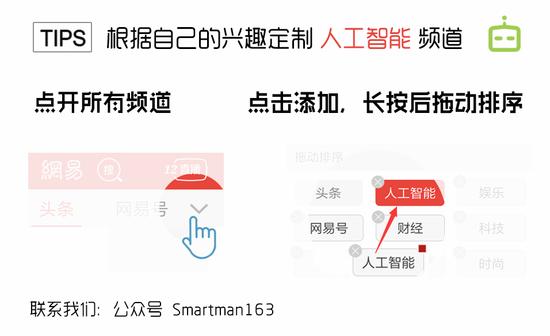 燑br>
燑br>
Laptop power adapter charger for Asus:
Laptop Model
Power Adapter
K42F K42JB K42JK K42JR K42JV K52f A52f A42 X52f A52 A52f A52J
19v 3.42a, 5525
K60IJ K50IJ K50I K60I
19v 4.74a, 5525
Our service:
Stable output and high charging efficiency.
Elegant outlook design as original one, touch smoothly and comfortable.
Original charger is good, but as a replacement, our product has more reasonable price when your original charger is broken.
And, the market of the replacement adapters becomes bigger and bigger. People would rather buy a copy one then the original because of the price.
But at the same time, people worry about that they will buy something defective. So the problem comes, how to buy a good quality one with a good price?
As a professional power adapter manufacturer, we have excellent R&D team, skilled staffs and responsible after-sale service. All your benefits can be under protected after you buy products for our company.
Our certificates :ISO9001:2008 & ISO14001:2004 , CCC , CE , FCC , ROHS.
All our products has 1 year warranty. In other words, if you get the dad products which are not damaged physically from us in one year, we will replace you the new one or the whole bulk order.
Asus Adapter,Adapter For Asus,Laptop Adapter For Asus ,Power Supply For Asus
Shenzhen Waweis Technology Co., Ltd. , https://www.huaweishiadapter.com
